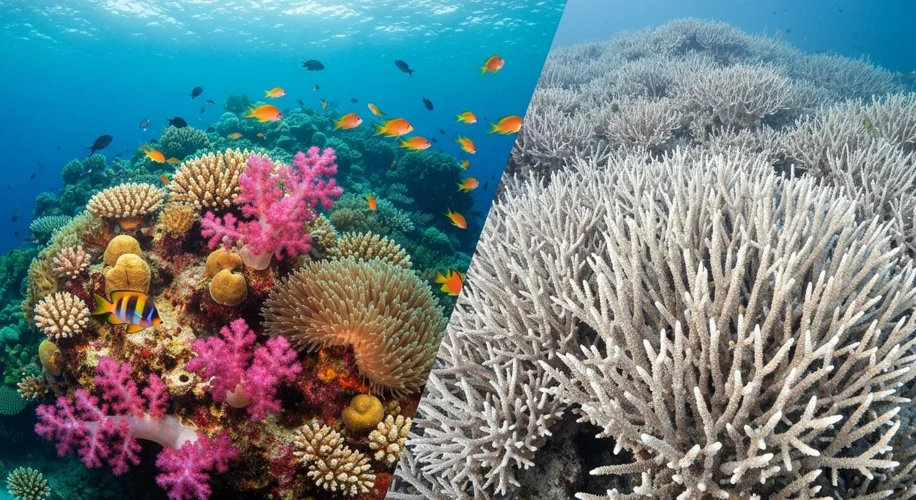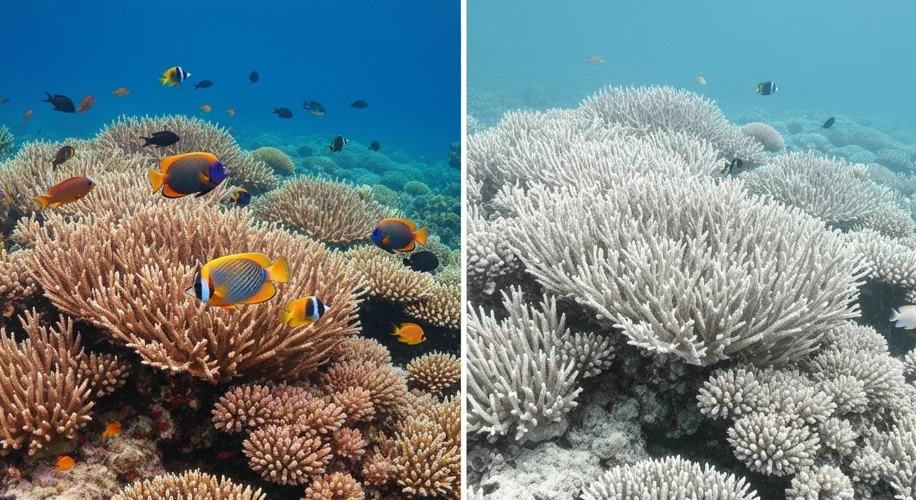Imagine a bustling metropolis, vibrant with life, a kaleidoscope of color and activity. Now, imagine that metropolis slowly, tragically, turning to a ghostly white, its inhabitants vanishing, its structures crumbling. This isn’t a scene from a dystopian film; it’s the unfolding reality for coral reefs across the globe, a stark and silent scream against the rising tide of climate change.
For millennia, coral reefs have been the rainforests of the sea. These intricate, living structures, built by tiny animals called polyps, teem with an astonishing diversity of life. They are nurseries for countless fish species, natural barriers protecting coastlines from storm surges, and sources of livelihood and wonder for coastal communities. Their existence is a delicate dance with their environment, finely tuned to specific water temperatures, acidity levels, and sunlight.
But this ancient equilibrium is being brutally disrupted. The culprit, with a chillingly familiar name, is climate change, driven by humanity’s insatiable appetite for fossil fuels. As we pump greenhouse gases into the atmosphere, the planet warms, and with it, the oceans. For corals, this is akin to a slow-motion fever. When water temperatures rise just a degree or two above their tolerance for an extended period, corals become stressed. They expel the symbiotic algae, called zooxanthellae, that live within their tissues. These algae provide corals with up to 90% of their energy and give them their vibrant colors. Without them, the coral turns stark white, a phenomenon known as coral bleaching.

The Great Barrier Reef, the world’s largest living structure, a marvel visible even from space, has suffered multiple mass bleaching events in recent years, most notably in 2016, 2017, and 2020. These weren’t isolated incidents. From the Caribbean to the Indo-Pacific, reefs are blanching and dying at an alarming rate. The 1998 global bleaching event, once considered a catastrophe, now seems like a mild tremor compared to the earthquakes of the last decade.
But the heat is not the only weapon climate change wields. As atmospheric carbon dioxide increases, so too does its absorption by the oceans. This leads to ocean acidification, a process that makes it harder for corals, and other shelled organisms, to build and maintain their calcium carbonate skeletons. Imagine trying to build a house with dissolving bricks; that’s the challenge facing corals in an increasingly acidic ocean.
The consequences are far-reaching and devastating. For the estimated quarter of all marine life that depends on coral reefs, their homes are disappearing. Fish populations plummet, impacting the food security and economies of millions of people. Coastal communities lose their natural protection against storms, leading to increased erosion and damage. The loss of biodiversity is a tragedy for the planet, a diminishment of its natural heritage.
History offers us chilling precedents. While not directly caused by anthropogenic climate change, past shifts in ocean conditions have profoundly impacted marine ecosystems. For instance, the end of the last ice age, a period of rapid natural warming and sea-level rise, undoubtedly altered marine habitats. Volcanic events, like the massive eruption of Mount Tambora in 1815, caused widespread cooling and crop failures, indirectly impacting coastal environments through altered runoff and nutrient loads. However, these were natural fluctuations over geological timescales. The current rate of change, driven by human activity, is unprecedented in its speed and intensity.
The narrative of coral reef dieback is a race against time. Scientists are desperately trying to understand coral resilience, exploring new technologies to restore damaged reefs, and advocating for urgent global action to reduce greenhouse gas emissions. Yet, the scale of the problem is immense. The very existence of these vibrant underwater cities hangs precariously in the balance, a testament to our collective impact on the planet. The silent scream of the reefs is a warning, a plea for us to change course before these irreplaceable natural wonders fade into a bleached and barren past.

